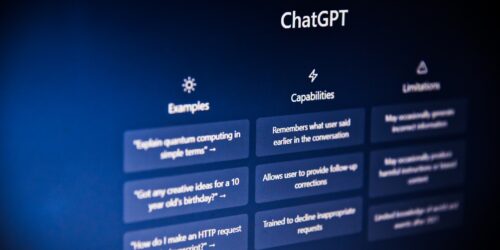Start, Continue, or End Learning with AI
This post explores how you can integrate generative AI (genAI, AI) into a stage of your class lesson or assessment. Encourage the use and documentation of AI selectively to foster student engagement while building genAI literacy skills.
Why Use GenAI at the Start, Middle, OR End
Here’s why it may be useful to use genAI for only one part of your lesson or activity:
- Helps you to identify where genAI will and will not support learning goals (Northwestern, 2024);
- Introduces genAI slowly and progressively, minimizing anxiety or confusion;
- Shows that genAI doesn’t replace human learning; and
- Students who wish not to use genAI to learn at this time won’t feel disadvantaged or left out.
Note: If you are just starting to introduce genAI, you may wish to screenshare Copilot as a demo or a “worked example,” allowing students to volunteer responses that you type in.
Start with AI
Summary: “Start with AI” activities can help to introduce a topic, generate ideas, provide simple definitions and descriptions, and assist in preliminary research at the outset of a lesson or activity.
Benefits: By incorporating AI at the beginning of an activity, you can generate student interest in a topic and get ideas flowing. They can also show where chatbots have certain “strengths” (such as ideation) and weaknesses, such as generalities, biases, inaccuracies, and “hallucinations” (i.e., fabricated yet plausible information).
Examples: To start with AI, consider brainstorming, summarizing, asking questions, and topic exploration activities. See Table 1 below for ideas.
| Course topic | AI Application | Example | Starter script/prompt |
|---|---|---|---|
| Bookkeeping | Brainstorming ideas | Use AI to generate a name for a company we will do our bookkeeping for. | “Today we are going to review bookkeeping activities for a recently established company selling sustainable farming equipment. What should we call this company? Let’s ask Copilot.” |
| Applied manufacturing | Defining/Describing a term or concept | Use AI to define or describe aspects of the latest manufacturing technologies | “Our industry is always changing. Let’s get a description from Copilot of what is a manufacturing technology and have it describe to us the latest manufacturing technologies and how they are being used. |
| Early Childhood Education | Questioning a topic | Use AI to find some questions about a topic | “Today we will discuss the physiological and cognitive development of 3 year olds. What questions do we have. Let’s ask Copilot what some interesting questions about this topic might be.” |
| Agri-business management | Exploring and researching | Use AI to generate ideas for sustainable farming practices in Ontario. | “Let’s start class by asking Copilot some recent research on sustainable farming practices and where they are being used.” |
Continue with AI
Summary: “Continue with AI” activities can support learning as the activity develops. First, students can do work on their own, then use chatbots to “do more” with their own initial thinking and cognitive effort.
Benefits: By incorporating AI into the middle step or stage of a learning activity, students can refine analyze, and improve their initial thinking. As well, they can come to understand the value of AI prompting skills; with specific and iterative prompting, students can generate higher-quality outputs.
Examples: Continue with AI” activities can include creating outlines, analyzing data or text, ranking ideas or options, or forming debate perspectives. See Table 2 below for ideas.
| Course | AI Application | Example | Starter script/prompt |
|---|---|---|---|
| Event management | Outlining a document | Use AI to create an outline for an event presented in a brief scenario | “As a class, we have brainstormed some ideas for the event planning we will need to consider for this scenario. I will input our class ideas into Copilot, and ask it to give us an outline of the event planning needs. Then, we can review what it gave us and make adjustments.” |
| General arts and sciences | Analyzing data | Use AI to analyze data provided when observing a particular rock formation | “We have each shared some of the properties of this rock formation that we have observed. Let’s input our observations into Copilot to see if it can tell us what kind of rock formation it is and why these properties are consistent with that kind of formation (and formations similar to it).” |
| Media Foundations | Ranking choices or solutions | Use AI to rank the top social media applications for use based on different demographics | “Your groups have identified your target audience for a specific product. Now, let’s use Copilot to discover which demographic groups use which social media applications most often, then rank which apps are the best to use to market the product each group has been given.” |
| Business sustainability | Debate perspectives | Use AI to take one side of a debate | “You are going to participate in a ‘debate with AI.’ Let’s use Copilot to develop an argument in favour of using a service like Amazon Prime, and we’ll see if we can work as a class to create counter-arguments to its perspective.” |
End with AI
Summary: “End with AI” activities can refine, synthesize, and present ideas, information, and discussions students develop independently or as a group. These activities can be done near the end of an activity or lesson in order to connect what was learned to outcomes or upcoming assignments.
Benefits: With these activities you can save time, highlight key information, and support information retention. Ending with AI also provides documentation that can be shared with students as a study guide.
Examples: Use AI at the final stage of a learning activity to summarize what was learned or a source that was referenced, proofread student work, and select the best ideas or options. See Table 3 for ideas.
| Course | AI Application | Example | Starter script/prompt |
|---|---|---|---|
| Network technical support | Summarizing ideas | Use AI to summarize the solutions students share to address a technical support case | “Now that we have looked at a case together in small groups, let’s ask Copilot what it thinks is the best solution to the case. Then, we’ll copy our solutions to Copilot and get it to summarize what our solutions and its solution have in common.” |
| 3D Printing | Summarizing a source | Use AI to summarize a source they have consulted | “We have reviewed a number of resources in the class to identify what materials are needed for 3D printing. Please each group use a chatbot to summarize the resource they have consulted for this task.” |
| Nutrition and food service management | Proofreading | Use AI to proofread a menu or nutrition plan | “Now that we have each designed a menu or nutrition plan, let’s use Copilot to review and proofread our plans. Let’s ask it to make sure that our APA formatting is correct. Let’s also ask it to verify that it is following the criteria that we provide for it.” |
| Urban planning and GIS | Selecting a solution | Use AI to confirm and validate the best location for a new park based on the information that students share | “Now that we have each designed a menu or nutrition plan, let’s use Copilot to review and proofread our plans. Let’s ask it to make sure that our APA formatting is correct. Let’s also ask it to verify that it follows the criteria we provide for it.” |
Final Thoughts
Adopting AI for in-class activities is new terrority–for us and for our students. We can reduce confusion and promote the responsible use of AI by providing clear instructions, modeling safe practices, verifying and validating AI outputs for accuracy, and monitoring student work to ensure that AI is being used appropriately.
To provide students with choice and equity in their learning at this time, you may wish to provide alternatives to students who choose not to use AI (for example, by providing a template or an AI output for students to review). Students can choose to opt out of submitting work to any AI tools.
References
Northwestern University. (2024). Generative Artificial Intelligence and Assignments.



